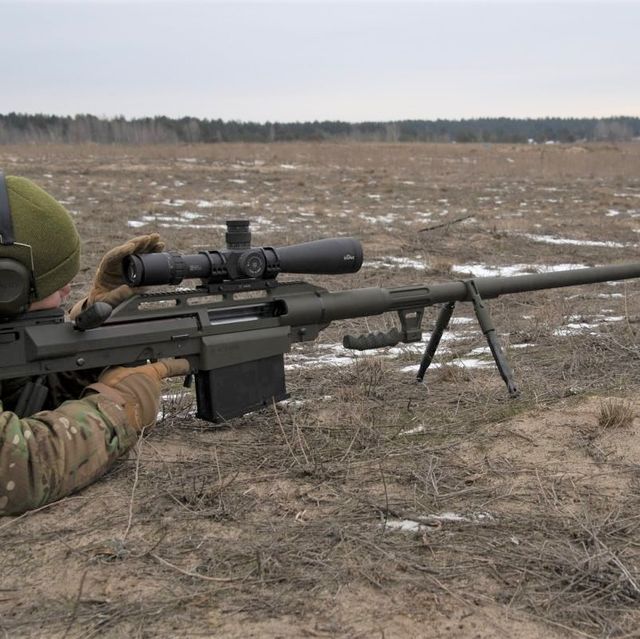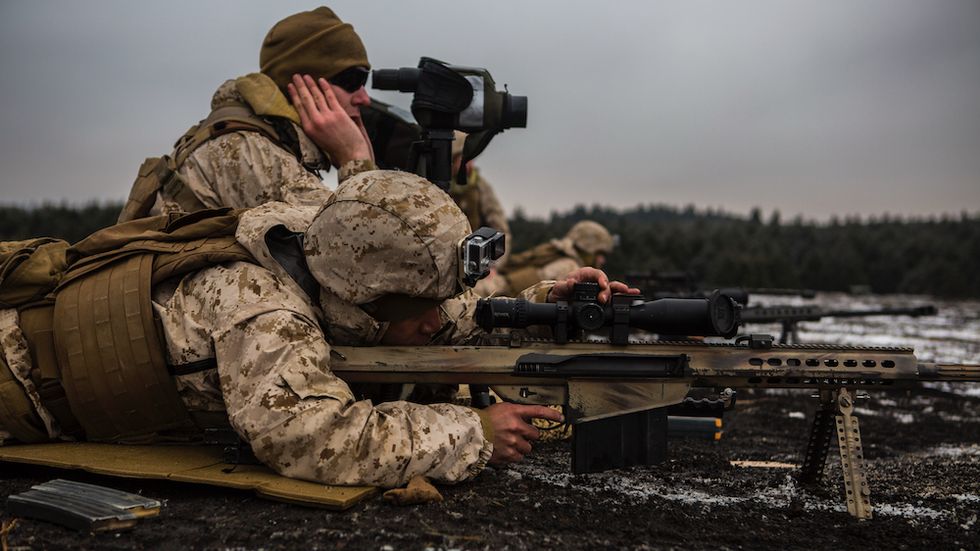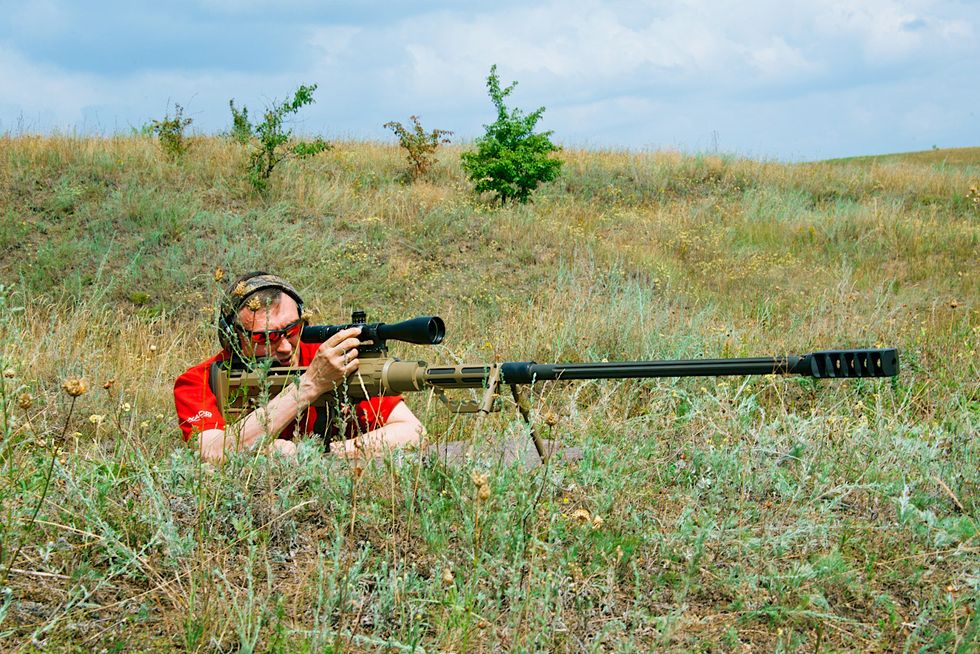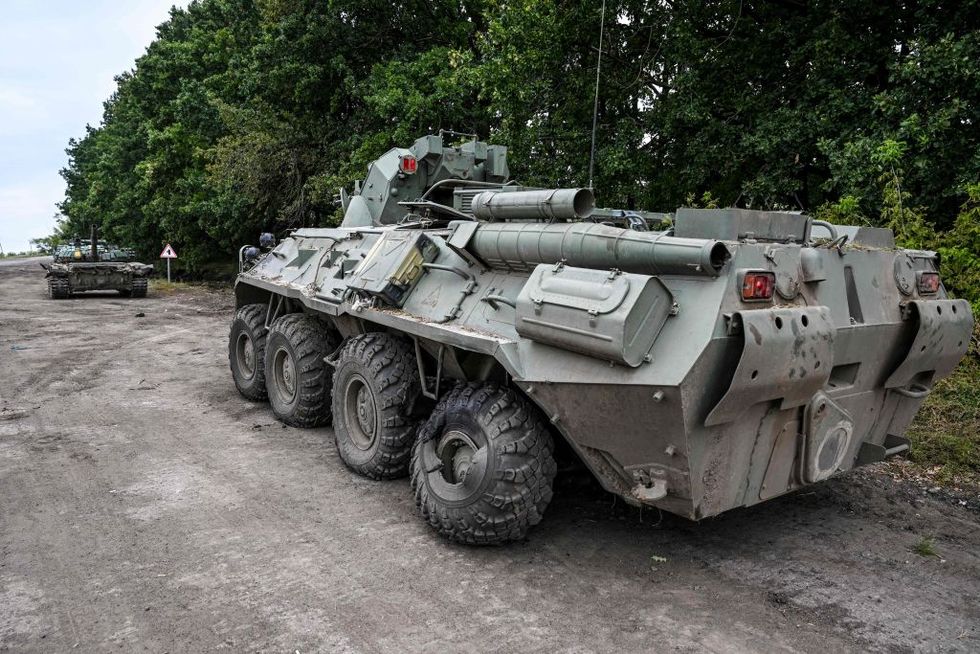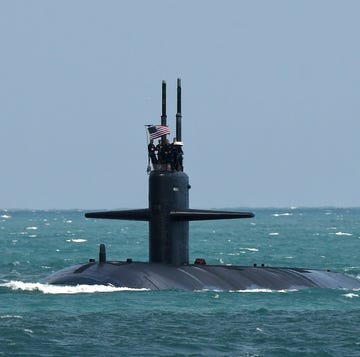- The Snipex Alligator is one of the largest, most powerful sniper rifles in existence.
- The Alligator is in service with Ukrainian special operations forces battling Russian invaders.
- The rifle uses heavy machine gun rounds and has a range of up to four miles.
One of the world’s biggest and most dangerous sniper rifles is operating right now on the front lines in Ukraine. The Snipex Alligator, designed to use the 14.5-millimeter heavy machine gun round, can range out up to four miles and strike with nearly twelve tons of energy. The rifle allows individual Ukrainian troops to target not only enemy soldiers but also their light-armored vehicles, communications gear, and even ammunition and fuel dumps, pushing the invading Russian forces out of the country.
The history of sniping goes back to the Revolutionary War, when colonial sharpshooters, raised to use hunting rifles to procure game, turned their sights on British Army redcoat troops. Until recently, most military sniper rifles were adapted from service rifles, like the M1903 Springfield service rifle of World War I and World War II, or hunting rifles like the Remington 700. Although convenient, this restricted ammunition and caliber development, with sniper rifles stuck using relatively small military- and hunting-caliber ammo.
In the 1980s, Ronnie Barrett of Tennessee invented the Barrett Model 82, the first sniper rifle to use a .50-caliber heavy machine gun round, as opposed to a military small arms or hunting round. The Model 82 was a revelation to the world of precision shooting. The .50-caliber (12.7mm) round was heavier and could inflict significantly more damage than .308 and .30-06, traditional military and hunting rounds.
The “Barrett” as it became known was quickly adopted by armies around the world, and was so powerful it created an entirely new category of weapon: the “anti-materiel rifle.” The category typically describes a weapon .50-caliber or larger that can not only engage person-sized targets, but also lightly armored and unarmored vehicles, communications arrays, radar arrays, fuel and ammunition depots, and even stationary and hovering aircraft. An anti-materiel rifle, for example, could disable a tank-transporting truck by piercing its engine block.
As powerful as Barrett’s invention was, Ukraine’s new Snipex Alligator anti-materiel rifle goes one further. The Alligator, developed by Snipex, is a highly specialized weapon, and a big one at that. The rifle, fully assembled, is six feet, six inches long (longer than the average sniper is tall) and weighs 50 pounds. Each 14.5mm round weighs 2.2 ounces, compared to a 1.5 ounces for the .50 caliber round used by the Model 82. A typical hunting rifle has a rifle barrel 22 inches long, while the Model 82 has a barrel 27 inches long. The Alligator, which seemingly dwells in superlatives, is equipped with a whopping 47-inch barrel.
Like the Model 82 the Alligator uses another machine gun round, the larger, even more powerful 14.5mm×114 round originally used in the Soviet-era KPV heavy machine gun. A round’s relative power is often measured in foot pounds. Dictionary.com defines a foot pound as “equal to the work done by a force of one pound when its point of application moves through a distance of one foot in the direction of the force.” A .308 round will generate 2,641 foot pounds of energy when fired, while a .50 caliber round will generate 11,489 foot pounds of energy. The 14.5mm round easily doubles that, generating an incredible 23,380 foot pounds of energy.
The sheer size and energy of the round helps make it a light anti-armor weapon. Snipex claims the Alligator can penetrate 10mm steel armor at 1,500 meters. That’s enough to perforate the 9mm side armor of a Russian BTR-80 wheeled armored personnel carrier, allowing the sniper to engage the troops riding inside.
The Snipex Alligator has an effective range of just under 2,000 meters, which translates to just under one and one-quarter mile. It has a maximum range of just under 7,000 meters, or a little over four miles. The current standing world record for a long-range sniper kill is 3,540 meters, made by a Canadian special operations sniper in Iraq in 2017. That particular shot was extraordinarily difficult, and while the Alligator could theoretically make it, most shots taken between 3,500 and 7,000 meters would likely be harassing fire or directed against a large area target, like a communications or logistics unit.
One major issue with a rifle using the 14.5mm round is recoil, or the pushback from a round fired. The 14.5mm round has a lot of recoil, but the Alligator mitigates this in several ways. For one, the 50-pound weight of the rifle will soak up a lot of recoil, steadying the weapon. The Alligator also uses a recoil-isolating buttstock and a four- or five-baffle muzzle brake. A Snipex promotional video shows that, thanks to these features, felt recoil is not as terrible as it could be.
The Snipex Alligator entered service with Ukrainian special operations forces in 2021, just in time for the Russian invasion. How many rifles have actually reached the battlefield is not clear, though. It’s also not clear what practical impact they’ve had on the battlefield, but the theoretical impact—allowing a single soldier to engage a wealth of previously untouchable targets—is enormous.

Kyle Mizokami is a writer on defense and security issues and has been at Popular Mechanics since 2015. If it involves explosions or projectiles, he's generally in favor of it. Kyle’s articles have appeared at The Daily Beast, U.S. Naval Institute News, The Diplomat, Foreign Policy, Combat Aircraft Monthly, VICE News, and others. He lives in San Francisco.
